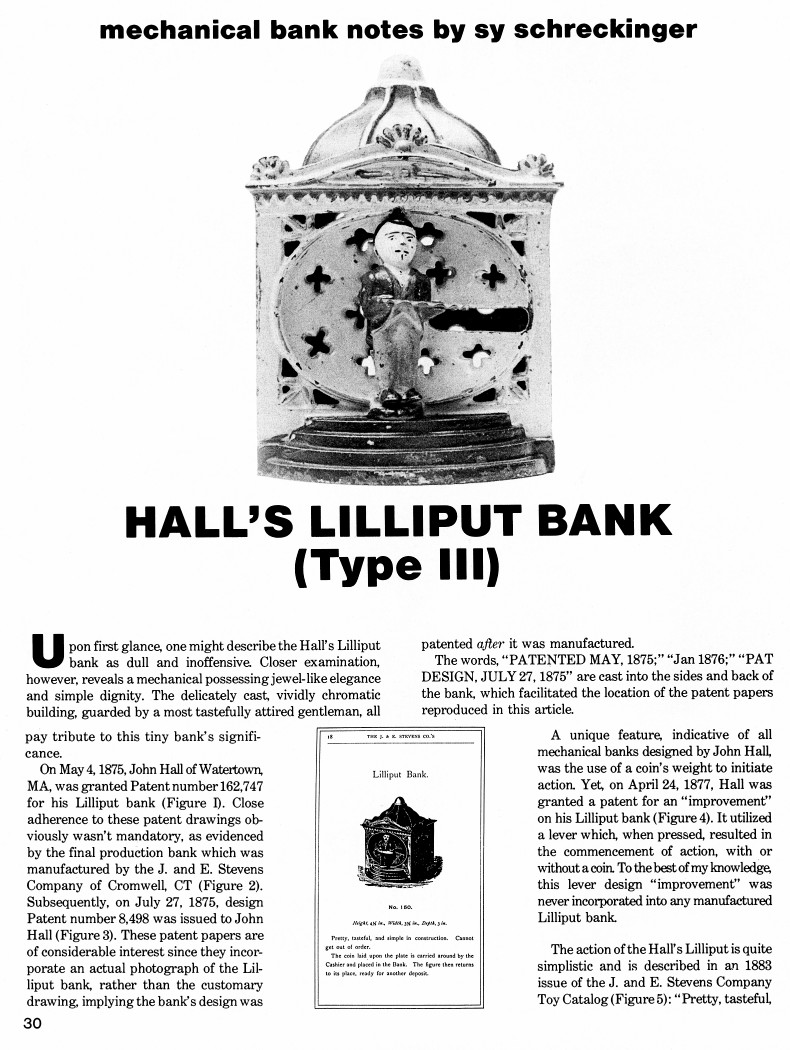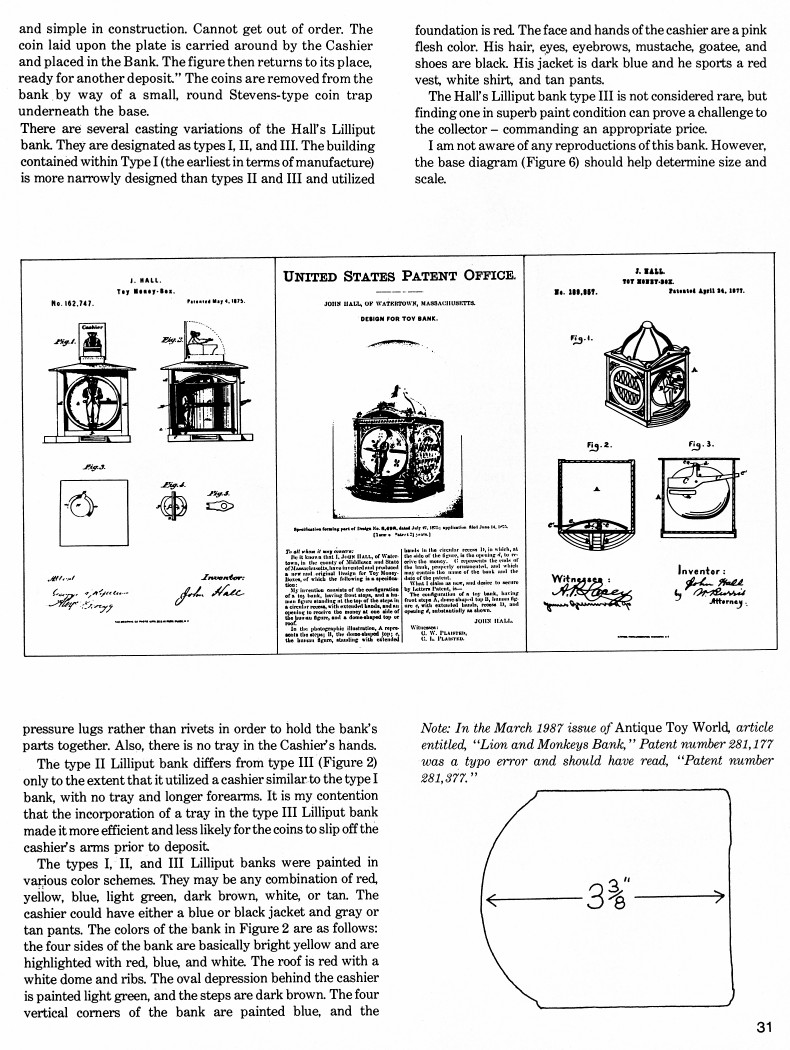|
Hall’s Lilliput Bank (Type III)
by Sy Schreckinger – ANTIQUE TOY WORLD Magazine – May, 1987
Upon first glance,
one might describe the Hall's Lilliput bank as dull and inoffensive.
Closer examination, however, reveals a mechanical possessing jewel-like
elegance and simple dignity. The delicately cast, vividly chromatic
building, guarded by a most tastefully attired gentleman, all pay tribute
to this tiny bank's significance.
On May 4, 1875, John Hall of Watertown, MA, was granted Patent number
162,747 for his Lilliput bank (Figure 1). Close adherence to these patent
drawings obviously wasn't mandatory, as evidenced by the final production
bank which was manufactured by the J. and E. Stevens Company of Cromwell,
CT (Figure 2). Subsequently, on July 27, 1875, design Patent number
8,498
was issued to John Hall (Figure 3). These patent papers are of
considerable interest since they incorporate an actual photograph of the Lilliput bank, rather than the customary drawing, implying the bank's
design was patented after it was manufactured.
The words, "PATENTED MAY, 1875;" "Jan 1876;" "PAT DESIGN, JULY 27, 1875"
are cast into the sides and back of the bank, which facilitated the
location of the patent papers reproduced in this article.
A unique feature, indicative of all mechanical banks designed by John
Hall, was the use of a coin's weight to initiate action. Yet, on April 24,
1877, Hall was granted a patent for an "improvement" on his Lilliput bank
(Figure 4). It utilized a lever which, when pressed, resulted in the
commencement of action, with or without a coin. To the best of my
knowledge, this lever design "improvement" was never incorporated into any
manufactured Lilliput bank.
The action of the Hall's Lilliput is quite simplistic and is
described in an 1883 issue of the J. and E. Stevens Company Toy Catalog
(Figure 5): "Pretty, tasteful, and simple in construction. Cannot get out
of order. The coin laid upon the plate is carried around by the Cashier
and placed in the Bank. The figure then returns to its place, ready for
another deposit." The coins are removed from the bank by way of a small,
round Stevens-type coin trap underneath the base.
There are several casting variations of the Hall's Lilliput bank.
They are designated as types I, II, and III. The building contained within
Type I (the earliest in terms of manufacture) is more narrowly designed
than types II and III and utilized pressure lugs rather than rivets in
order to hold the bank's parts together. Also, there is no tray in the
Cashier's hands. The type II Lilliput bank differs from type III (Figure
2) only to the extent that it utilized a cashier similar to the type I
bank, with no tray and longer forearms. It is my contention that the
incorporation of a tray in the type III Lilliput bank made it more
efficient and less likely for the coins to slip off the cashier’s arms
prior to deposit.
The types I, II, and III Lilliput banks were painted in various color
schemes. They may be any combination of red, yellow, blue, light green,
dark brown, white, or tan. The cashier could have either a blue or black
jacket and gray or tan pants. The colors of the bank in Figure 2 are as
follows: the four sides of the bank are basically bright yellow and are
highlighted with red, blue, and white. The roof is red with a white dome
and ribs. The oval depression behind the cashier is painted light green,
and the steps are dark brown. The four vertical corners of the bank are
painted blue, and the foundation is red. The face and hands of the cashier
are a pink flesh color. His hair, eyes, eyebrows, mustache, goatee, and
shoes are black. His jacket is dark blue and he sports a red vest, white
shirt, and tan pants.
The Hall's Lilliput bank type III is not considered rare, but finding
one in superb paint condition can prove a challenge to the collector –
commanding an appropriate price.
I am not aware of any reproductions of this bank. However, the base
diagram (Figure 6) should help determine size and scale.
Note: In the
March 1987 issue of Antique Toy World, article entitled,
"Lion and Monkeys Bank, " Patent number 281,177 was a typo error and
should have read, "Patent number 281,377."
|


